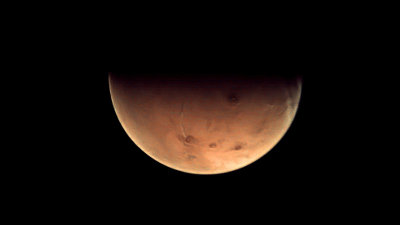
Tuesday, near Malargüe, a city in Argentina about 1,550 meters above sea level, the new ESA’s Deep Space Antenna 3 (DSA 3) station was officially opened, a parabolic antenna of 35 meters in diameter capable to transmit and receive in the X-band and receive in the Ka band. The structure that supports the moving antenna is 40 meters high and weighs 610 tons. It’s part of the European Space Tracking (Estrack), the network of ground stations scattered all over the world.
The result of an agreement signed with Argentina in 2009 for a period of 50 years, the DSA 3 station is designed to support ESA in various tasks related to space missions and a number of satellites in orbit. It will help to maintain communications during the various stages of launches but also on a daily basis with the various space probes around the solar system. Therefore, it will provide support to missions such as Mars Express and Venus Express but also to the Herschel and Planck space telescopes.
[ad name=”Google Adsense 468″]
In the coming years, the DSA 3 station will also support the new ESA missions such as Gaia, BepiColombo, ExoMars, Solar Orbiter, Euclid and Juice. It will also be used to to carry out scientific experiments, some of which will be run by Argentina.
The DSA 3 station will be fully in service next year but as the first symbolic image to inaugurate its use they chose an evocative image of Mars taken by the Visual Monitoring Camera (VMC), a low-resolution camera of Mars Express spacecraft.

When the image has been captured by the Malargüe antenna, it was regularly transmitted to the European Space Operations Centre (ESOC), the ESA’s operations center in Darmstadt, Germany, which ensures the smooth operation of the space probes and satellites placed into orbit by ESA. There, the data received from satellites and probes are processed and when they need to they can send tehm commands.
With this new station, ESA confirms its high technological level. The agency never sent astronauts to the Moon but keeps on demonstrating its skill in running space missions with automated probes that can travel in deep space.

